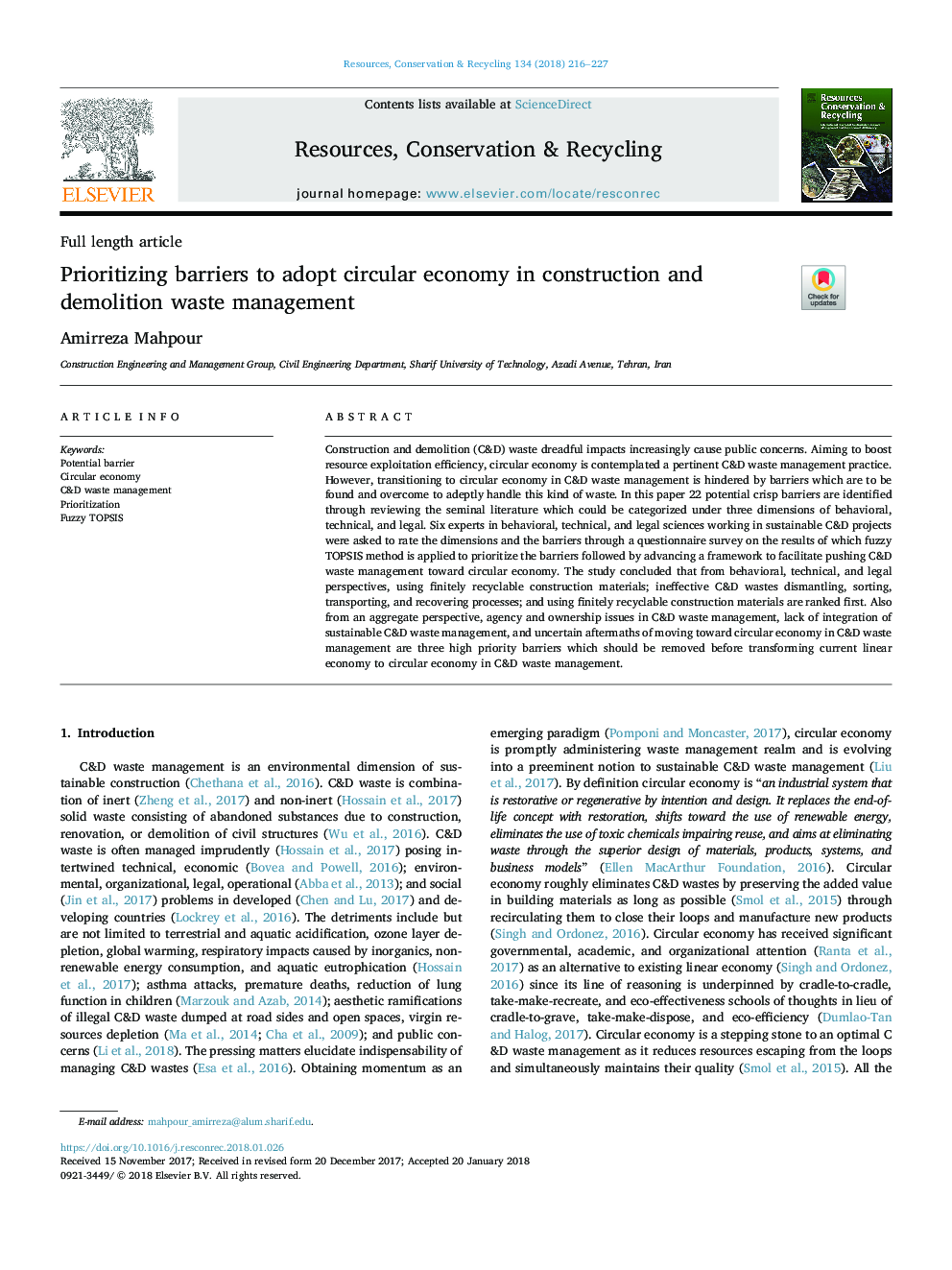| Article ID | Journal | Published Year | Pages | File Type |
|---|---|---|---|---|
| 7494197 | Resources, Conservation and Recycling | 2018 | 12 Pages |
Abstract
Construction and demolition (C&D) waste dreadful impacts increasingly cause public concerns. Aiming to boost resource exploitation efficiency, circular economy is contemplated a pertinent C&D waste management practice. However, transitioning to circular economy in C&D waste management is hindered by barriers which are to be found and overcome to adeptly handle this kind of waste. In this paper 22 potential crisp barriers are identified through reviewing the seminal literature which could be categorized under three dimensions of behavioral, technical, and legal. Six experts in behavioral, technical, and legal sciences working in sustainable C&D projects were asked to rate the dimensions and the barriers through a questionnaire survey on the results of which fuzzy TOPSIS method is applied to prioritize the barriers followed by advancing a framework to facilitate pushing C&D waste management toward circular economy. The study concluded that from behavioral, technical, and legal perspectives, using finitely recyclable construction materials; ineffective C&D wastes dismantling, sorting, transporting, and recovering processes; and using finitely recyclable construction materials are ranked first. Also from an aggregate perspective, agency and ownership issues in C&D waste management, lack of integration of sustainable C&D waste management, and uncertain aftermaths of moving toward circular economy in C&D waste management are three high priority barriers which should be removed before transforming current linear economy to circular economy in C&D waste management.
Related Topics
Physical Sciences and Engineering
Energy
Renewable Energy, Sustainability and the Environment
Authors
Amirreza Mahpour,
